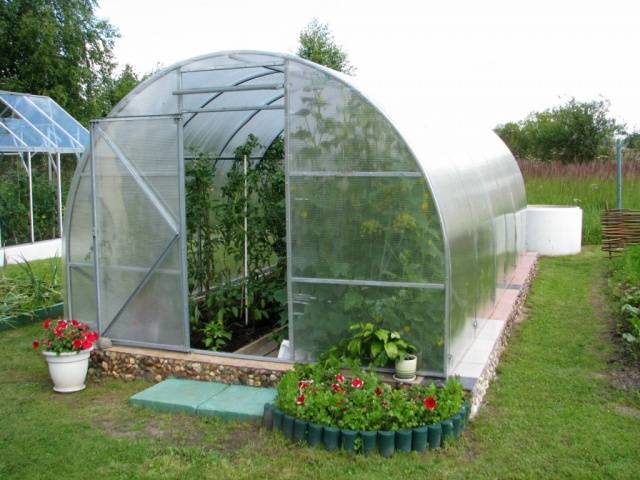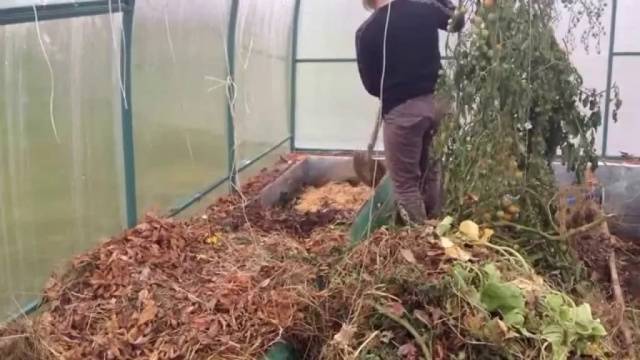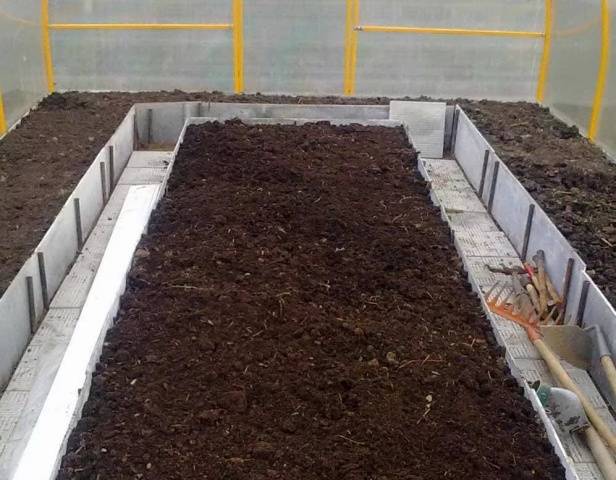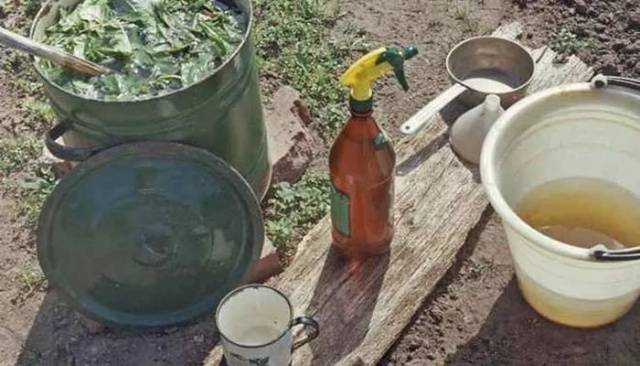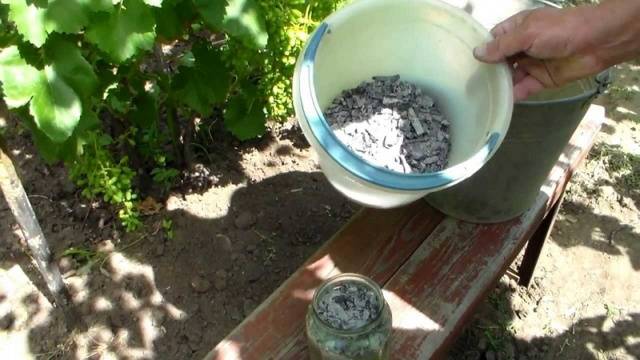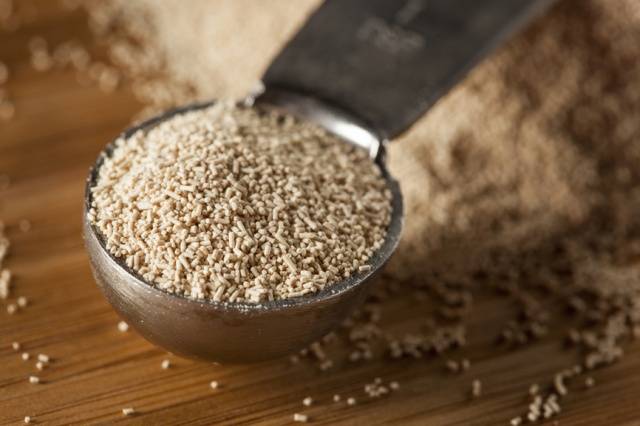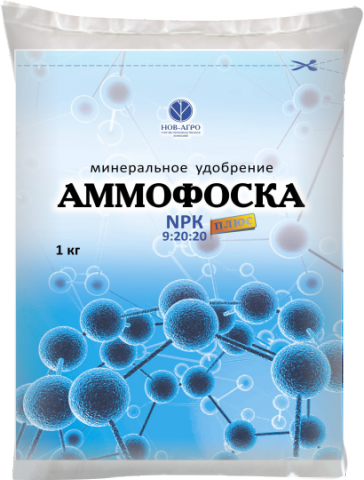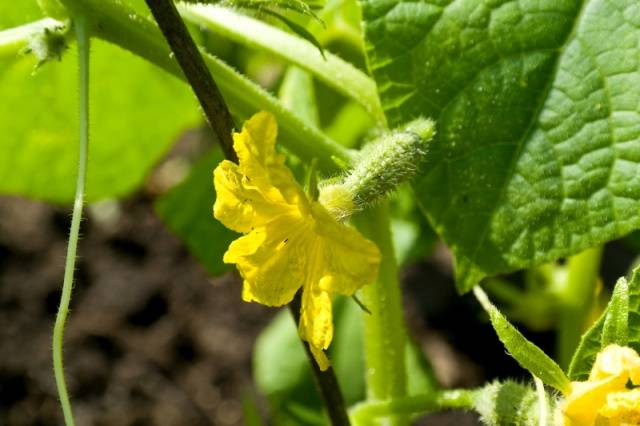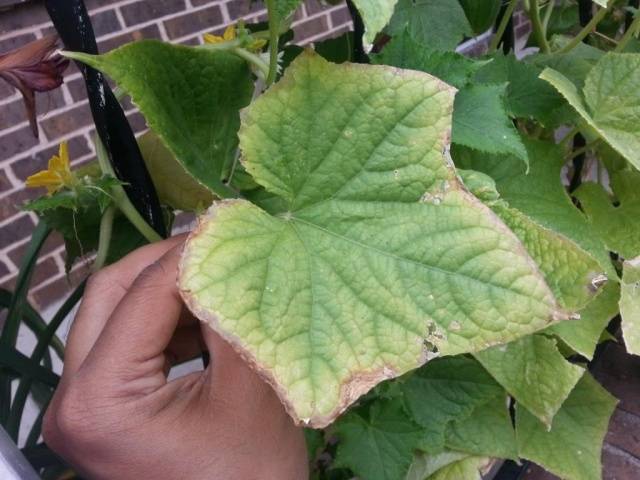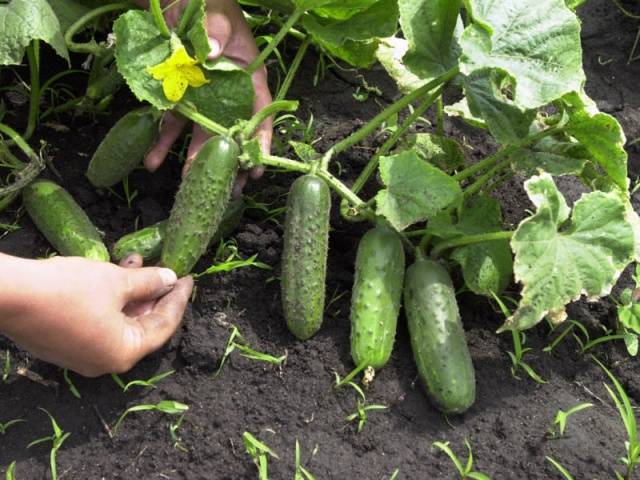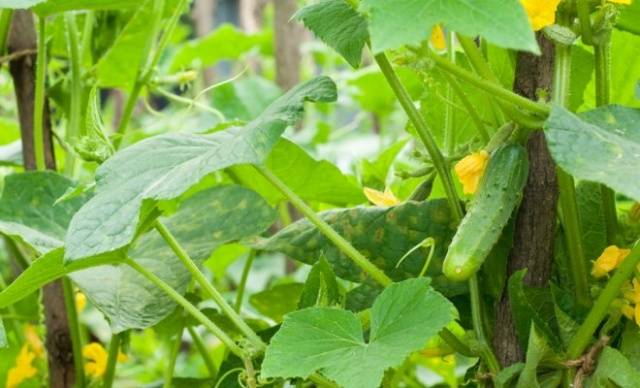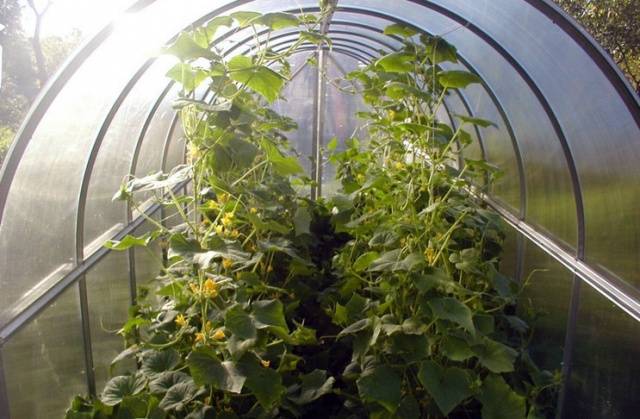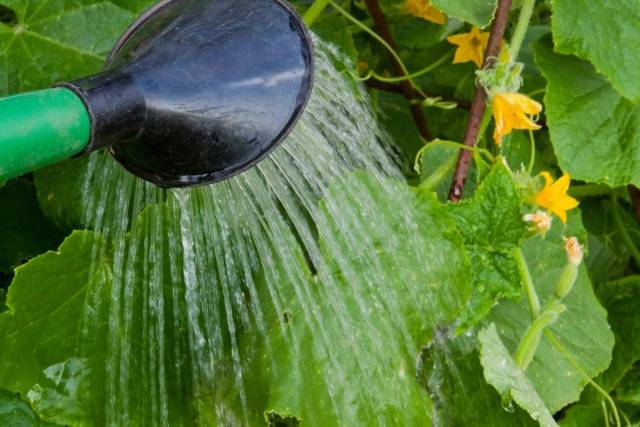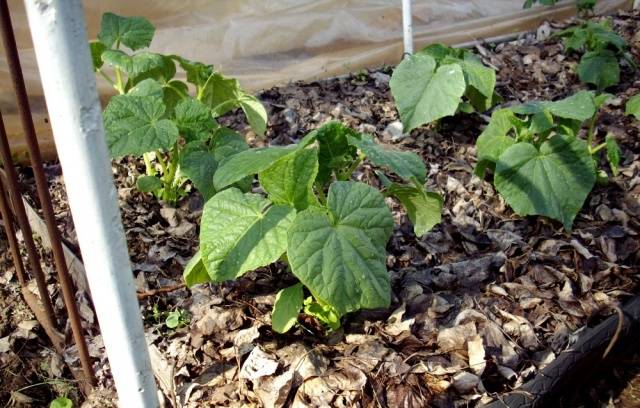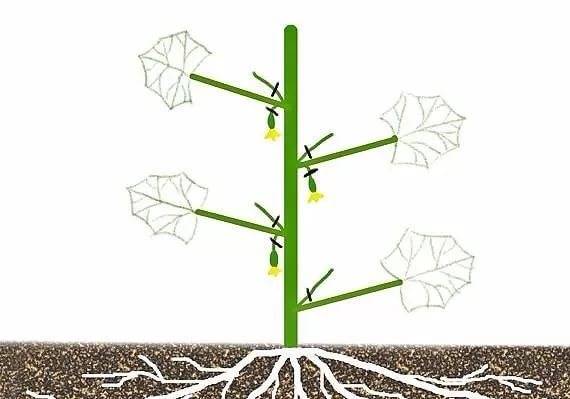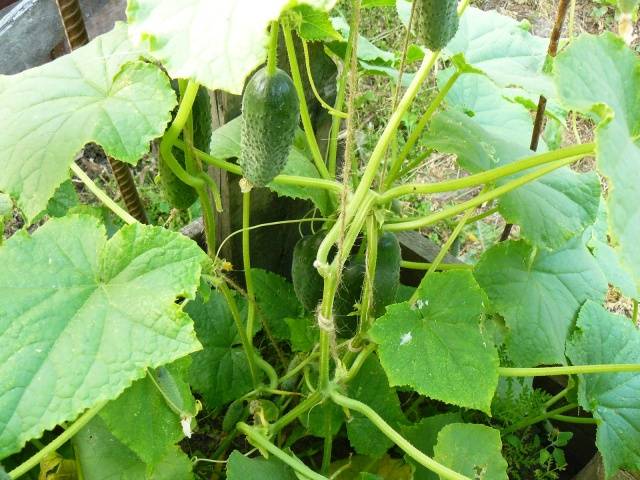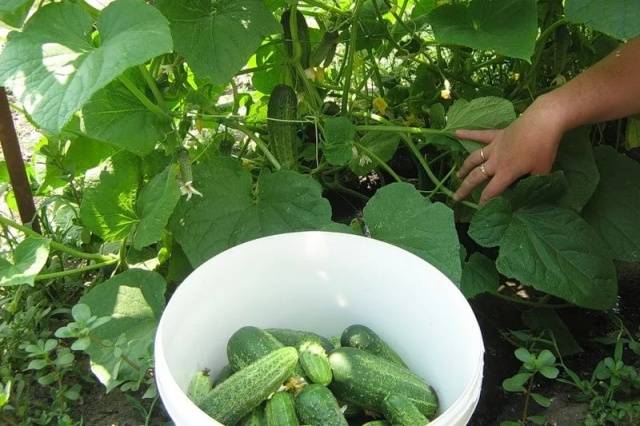Content
After a long winter, the body requires a shock dose of vitamins and light food. Cucumbers are the vegetable that will help everyone. The harvest can be obtained in record time when growing crops in a polycarbonate greenhouse.
Recently, many people prefer greenhouses made of modern polymer material. Cellular polycarbonate is durable, easy to install, retains heat well, transmits light, but scatters harmful ultraviolet radiation. A polycarbonate greenhouse creates favorable conditions for plants. With such a greenhouse, getting early cucumbers becomes a reality.
Growers need to provide temperature, moisture and nutrients to cucumbers for development and fruiting. The lack of nutrition in the soil can lead to various negative consequences: the dropping of the ovaries, a change in the taste and appearance of cucumbers, yellowing of the leaves and the death of the plant.
Preparatory work in the greenhouse
In order not to push the plants to the extreme, regular planned feeding, watering and maintaining the temperature in the greenhouse are required. For full development, cucumbers need vital nutrients: without nitrogen leaves and shoots will not develop, without phosphorus and potassium there will be no fruits.
The basis for the nutrition of cucumbers can be laid in the fall when preparing the soil in a polycarbonate greenhouse. After the harvest has been harvested, all residues of plants and fruits are removed and disposed of in the greenhouse, the best option is burning. So, you will have an excellent fertilizer for the next season. Ash is perfectly stored in a tightly sealed dry container. In plant residues, bacteria and fungi usually hibernate, which are causative agents of diseases. Be sure to get rid of the potential threat.
You can very well disinfect the inside of the greenhouse using a sulfuric smoke bomb. Then prepare the soil for the next season. Dig up with manure, peat or humus.
Spring preparation of the soil for cucumbers includes digging up and applying shortly before planting (about 10 days) a composition of: superphosphate, potassium salt, ammonium nitrate, potassium sulfate... Take each fertilizer, respectively, 25 g for each square. m of greenhouse soil. Directly when planting, cucumbers do not require fertilization.
Fertilizers for cucumbers
During the growing season, cucumbers need 3, sometimes 4 fertilizing with organic matter or mineral fertilizers, every 15 days. Watch a video about feeding cucumbers:
First feeding
After the cucumber seedlings are planted in the greenhouse, they are given time (10-15 days) to adapt. And only after that, the first feeding of cucumbers is carried out in the greenhouse. Plants require nitrogen for active growth and accumulation of green mass. Therefore, at the initial stage, gardeners actively feed the cucumbers with organic matter. For feeding cucumbers, aqueous solutions are suitable: from domestic animal manure, bird droppings, "herbal tea", ash, yeast.
Recommended dosages for the preparation of slurry-based solutions: 1 part of the infusion to 10 parts of water; based on bird droppings: 1/15; herbal tea is diluted 1-2 / 10. An ash solution for feeding cucumbers is prepared in different ways. Add a glass of ash to a bucket of water, mix well. The solution is ready and you can water cucumbers with it.
You can make an ash extract: pour half a glass of ash with hot water (1 liter), stir thoroughly, put it on the stove, bring to a boil and boil for 15-30 minutes. Infuse the concentrate for 5 hours, then bring to readiness by adding a bucket of water (usually 10 liters). You can water the cucumbers. But it is much more efficient to use ash extraction for foliar spraying of cucumbers in the greenhouse. Spraying "on the leaf" is effective in the shortest possible time. This is especially important if you see the first signs lack of nitrogen: depressed appearance of cucumbers, yellowing of leaf plates, fading in growth.
Fertilizing cucumbers in the greenhouse with baker's yeast is also practiced among amateur gardeners. Buy regular yeast (live in packs or dry granular). Dissolve in a bucket of water, add a little sugar, let the solution stand for 2 hours for the yeast to start its life. Yeast acts on cucumbers as a kind growth promoter... It is noticed that plants after yeast feeding become more viable, activated in growth.
Those who do not have the opportunity to use organic matter for feeding cucumbers in a greenhouse successfully use mineral fertilizers. Several options for the first feeding of cucumbers using mineral fertilizers:
- Ammonium nitrate, potassium sulfate, 15 g each, respectively, superphosphate - 40 g or double superphosphate - 20 g. The mineral mixture for feeding cucumbers is diluted in 10 liters of water;
- Ammofoska (30 g) is applied per 1 sq. m of soil. In the composition of ammophos, nitrogen is in last place (12%), however, this fertilizer should not be excluded from the list for feeding cucumbers at the first stage, since the fertilizer has a complex but balanced composition. Plants will receive complex feeding. In addition to nitrogen, ammophoska contains phosphorus and potassium, which are the main nutrients for cucumbers in the greenhouse, and sulfur, an element that promotes the assimilation of nitrogen. Fertilizer can be used as an independent feeding for cucumbers, and in combination with other types of fertilizers;
- Azofoska is a complex fertilizer consisting of 3 components: nitrogen, phosphorus and potassium. In terms of percentage, nitrogen is in first place. For different manufacturers, the indicators may differ from 16-27%. It is recommended to add 30-45 g in the form of granules, placing on 1 sq. m of soil, in the form of an aqueous solution of 20-30 g / bucket of water;
- Urea (1 tbsp. L.), Superphosphate (60 g), add to 10 liters of water, pour the cucumbers with the solution;
- Ammonium nitrate, superphosphate, potassium salt. Take 10 g of each cucumber fertilizer, place in a 10-liter bucket of water and stir.
When carrying out the first feeding, the plants should receive nutrients for the growth of leaves, stems and shoots.
Second feeding
The second feeding of greenhouse cucumbers is carried out when the plants have bloomed for the maximum number of ovaries formed. If at this stage the cucumbers do not have enough potassium, then flowering may stop, and the resulting ovaries will fall off.
- Measure out potassium nitrate in a volume of 20 g, ammonium nitrate and superphosphate (30 and 40 g, respectively). Stir everything in a 10-liter bucket of water, use for feeding cucumbers in the greenhouse;
- A solution of potassium nitrate (25 g / bucket of water) can be used for foliar spraying of cucumbers, the action of the solution through the leaves is faster. The solution is used for routine feeding, and its use is especially indicated when the first signs of potassium deficiency are noticed: dropping of ovaries, inactive flowering and yellowing of leaves from the edge;
- Kalimagenziya can be used for feeding cucumbers in a greenhouse. The fertilizer contains only 1% chlorine, but a very high potassium content - 30%. To fertilize 1 sq. m plantings, take 35 g of potassium magnesium.
Third feeding
For the third time, the cucumbers need to be fed during the period of mass fruiting, when all the plant's forces are directed to the harvest. At this time it takes feeding cucumbers in the greenhouse from polycarbonate fertilizers containing phosphorus, potassium and nitrogen with sulfur. Sulfur is necessary, since if it is available, nitrogen is absorbed as efficiently as possible. Phosphorus is necessary for slow ripening of cucumbers in a greenhouse and if the fruits grow crooked and tasteless.
To correct the situation, use the following fertilizing composition: ash (150 g), potassium nitrate (30 g), urea (50 g). All together dissolves in 10 liters of water.
Ammophos - a fertilizer with a high phosphorus content acts quickly. This makes it possible for gardeners to use fertilizer on a planned basis and in cases when an ambulance is needed for plants. Regardless of how you will apply ammophos: between rows (30-50 g per sq. M) or dissolved (20-30 g per 10 l of water), the fertilizer is quickly absorbed by cucumbers. The culture bears better fruit, the taste of cucumbers improves, the fruits are even, without flaws.
Fourth feeding
The fourth dressing for cucumbers in the greenhouse should contain all the basic nutrients. It is carried out in order to prolong the growing season and fruiting of the culture. Cucumbers respond very well to making an ash solution, feeding with "herbal tea" from nettle or soda solution (30 g per 10 liters of water).
You can use complex ready-made fertilizers for cucumbers in the greenhouse: "Kemira", "Agricola", "Pum", "Kristalon" and others. Manufacturers indicate dosage information for feeding cucumbers in the greenhouse.
Top dressing "on the leaf" is perceived by plants with great effect under unfavorable climatic conditions.
The basics of agricultural technology when growing cucumbers in a greenhouse
Polycarbonate greenhouses can now be found in almost every summer cottage. Still, the cultivation of cucumbers in a greenhouse is a vital necessity in the Russian climate.
Care in a polycarbonate greenhouse is somewhat different from caring for plants in the open field, as it requires compliance with watering conditions, temperature conditions and a schedule for feeding cucumbers.
Watering
Cucumbers in a polycarbonate greenhouse need frequent watering, especially during the ripening period. Most often, gardeners water from a watering can or use hoses with nozzles. But it is much more efficient to organize watering by sprinkling. To do this, hoses with holes through which water passes through the top of the greenhouse are pulled.
Each plant should consume at least 7-8 liters of water twice a week. In hot weather, watering in a polycarbonate greenhouse is done more often. It is very difficult to provide watering in the required volume with a watering can.
Temperature regime
When cultivating cucumbers in a polycarbonate greenhouse, it is important to ensure the required temperature regime:
- On sunny days + 24 + 28 degrees;
- In the absence of the sun + 20 + 22 degrees;
- + 16 + 18 degrees at night.
Only in such conditions will cucumbers be able to successfully grow and bear fruit, absorbing the nutrients that caring gardeners feed them with.
Too high temperatures are controlled by opening doors or vents in a polycarbonate greenhouse.
Do not allow sudden changes in the temperature regime of the greenhouse, which will also not benefit the plants, as it can cause disease, weakening, and low taste in fruits.
Cucumbers love 80-90% moisture.In a polycarbonate greenhouse, the issue of humidity is solved by spraying and frequent watering.
The soil temperature should not be higher than + 22 + 24 degrees. This can be achieved using mulch. Mulching the soil is also achieved that the soil in the polycarbonate greenhouse retains moisture well; beneficial organisms, worms, beetles, which loosen the soil, usually work under the mulch. Looseness of the soil is very important for cucumbers, as oxygen enters the roots of the crop through the pores. Mowed grass, sawdust, agrofibre are used as mulch.
Sprinkle bare roots with soil in time. This procedure promotes the formation of additional lateral roots.
Stem formation
A fruiting plant should have a certain structure, which begins to form with the appearance of 3-4 pairs of leaves. Lateral shoots that form in the first sinuses are plucked out together with the flowers. So, the main stem will focus on further growth.
Next, count 3-4 internodes. In them, the side shoots should be pinched, leaving a couple of leaves and a few cucumbers each.
In the next 3 internodes at the side shoots, leave 2 leaves and 2 ovaries, pinching the top. In the upper shoots, also pinch the growing point, leaving 3 leaves and 3 ovaries on each shoot.
The length of the main stem should not exceed 1.5-2 m. The cucumber whip is attached to the trellises by tying it on a twine. The twine is loosely tied over 2-3 sheets and attached to the trellis.
The role of the trellis is played by the wire, which is stretched at a height of about 2 m through the entire greenhouse. Gradually, as the stem grows, wrap it around the prepared twine.
Harvesting
Regular harvesting in a polycarbonate greenhouse stimulates the cucumbers for further fruit production. If you do not pick the cucumbers in time, then they outgrow and become unsuitable for food. Moreover, all the forces of the plant are directed to the overgrown cucumber so that the seeds ripen in it. No new fruits will be formed.
Harvesting in the greenhouse, once a day, you direct the plant's forces to the formation of new ovaries and fruits. The plant will strive to leave its offspring in each new fruit.
Conclusion
There are no tips and tricks that are the same for everyone, such that you can grow a fantastic harvest of cucumbers. The reason is that all gardeners have different types of soil, climatic conditions. However, labor and attention to your plants in a polycarbonate greenhouse, as well as adherence to basic agricultural practices, timely actions to feed and correct the situation of lack of nutrients will bring you closer to the harvest of cucumbers that you want to brag about.
